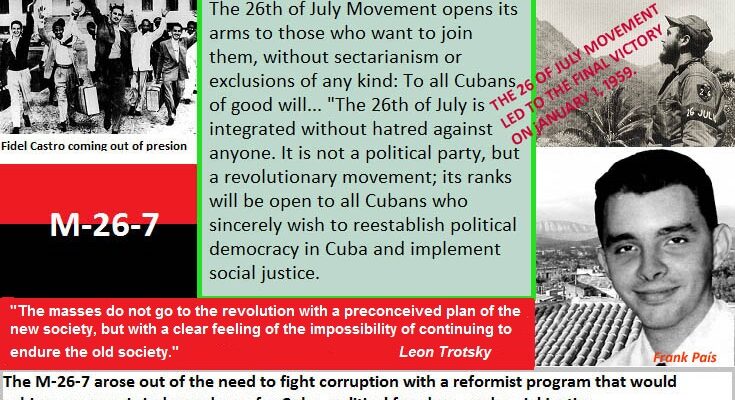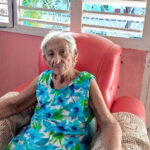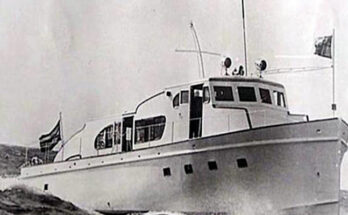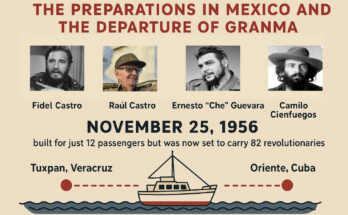The celebration of the National Rebellion Day on July 26th is approaching, since that was the day of the assault on the Moncada Barracks led by Fidel Castro, which gave rise to the July 26th Revolutionary Movement (MR-26-7) that would end with the overthrow of the dictatorship of Fulgencio Batista on January 1st, 1959.
The July 26th Revolutionary Movement (MR-26-7) arose from the need to organize and carry out the popular armed struggle against the tyranny of Fulgencio Batista, established by a coup d’état on March 10, 1952, and to fight corruption with a reformist program that would achieve economic independence for Cuba, political freedom, and social justice.
The prelude to this revolutionary movement was the attacks on the Moncada barracks in Santiago de Cuba and Carlos Manuel de Céspedes in Bayamo. The action from the military point of view was a failure, however, besides being the first armed attack against Batista’s dictatorship, it evidenced the existence of a group of revolutionaries willing to offer their lives for the freedom of the nation.
Few combatants were able to escape, many were captured and many of them were killed in the following days. Fidel Castro was arrested and separated from the rest of his comrades.
Fidel remained in prison until May 15, 1955. Once free, he created the political-military organization 26th of July Movement, together with Ernesto “Che” Guevara, Haydee Santa María and Malba Hernández.
Given the repression and persecution to which they were subjected, Fidel and a group of his comrades traveled to Mexico to organize from there the expedition that would arrive in Cuba on the Granma yacht on December 2, 1956.
Once in Cuba, Fidel, at the head of the MR-26-7, gave precise guidelines for the actions to be carried out in the plains and the cities against the tyranny and in the acquisition of resources and recruitment of those who voluntarily wanted to join the guerrilla in the Sierra Maestra.
The coordination took place through the national chief of action and sabotage of the 26th of July movement in the plains, Frank País García, who had shown his bravery and loyalty by leading the November 30th Uprising in Santiago de Cuba in support of the landing of the Granma yacht that would take place that same day, however given the bad weather, it took place on December 2nd.
The action of November 30 in Santiago was a success that allowed to prove the strength of the 26th of July Movement, as well as the adhesion of the people to the revolutionary cause. This action also revealed the extraordinary organizational capacity of Frank País and Pepito Tey. The action and its results reflect the stature of Frank, who was at the heart of the clandestine struggle against the Batista dictatorship.
The Movement was structured as an organization that covered the entire national territory. its networks extended to all the localities and municipalities of the country. municipalities of the country.
The first reinforcement of combatants arrived in the Sierra Maestra from the urban action apparatus in Santiago de Cuba. Weapons, supplies of all kinds were gathered and sent by the urban apparatus of the Movement.
Likewise, security and logistic networks were created that systematically collaborated with the Rebel Army. It was also a nourishing source of cadres and combatants. In this sense, it can be said that the 26th of July Movement was an organic group that was articulated as a whole in terms of the uprising struggle and in function of this, it had human and material resources according to the needs of the armed struggle.
Today’s youth have the valuable commitment of not forgetting the blood shed, not forgetting our History.




